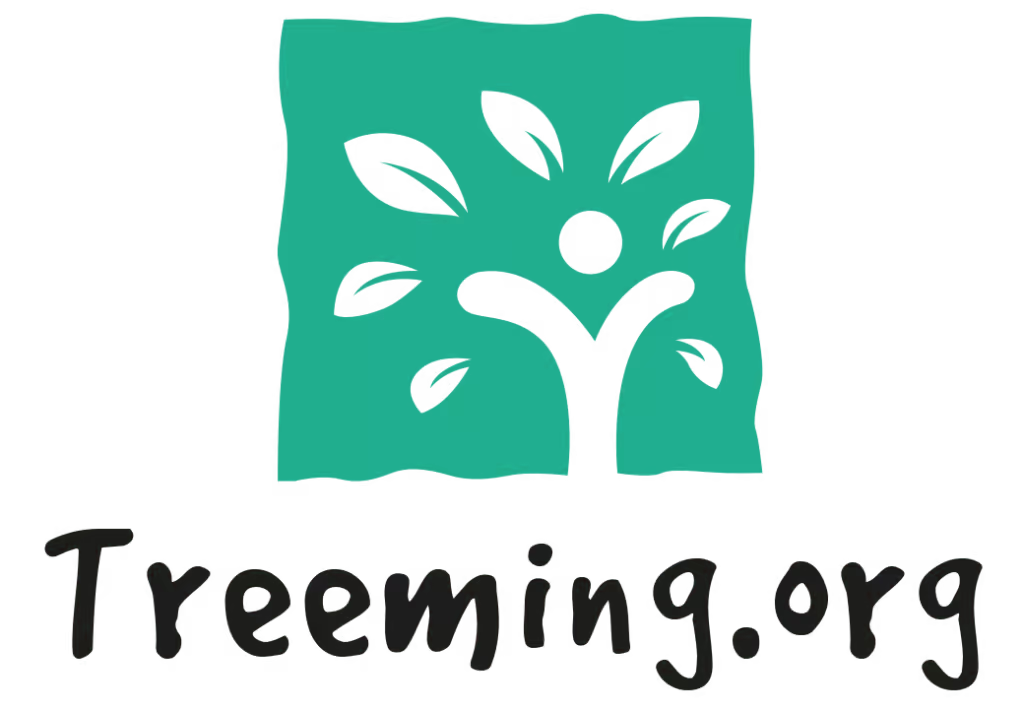Ever tried forest bathing? It’s like taking a stroll in the woods but with a twist. You’re not just walking; you’re soaking in the vibes of nature. This practice, called Meditation Forest Bathing, is about slowing down, breathing deep, and letting nature do its thing. It’s not about reaching a destination or breaking a sweat like hiking. Instead, it’s about being present and noticing the little things around you. Plus, while you’re at it, you might spot some healing plants that could be pretty useful. Let’s dive into how you can make the most out of this calming experience.
Key Takeaways
- Meditation Forest Bathing is a mindful walk in nature, not a hike.
- Focus on the present moment and use all your senses.
- Look out for common medicinal plants, but ensure they’re safe before use.
- This practice helps reduce stress and boosts the immune system.
- Guides can enhance the experience, but solo walks are also beneficial.
Understanding the Basics of Meditation Forest Bathing
The Origins of Forest Bathing
Forest bathing, or Shinrin-yoku, started in Japan in the 1980s as a way to reconnect with nature. It’s not about taking a literal bath in the forest but immersing oneself in the forest atmosphere. This practice is rooted in the belief that spending time in nature can heal the mind and body. The Japanese government even incorporated it into their national health program, recognizing the profound benefits of this practice.
Key Principles of Meditation in Nature
The essence of forest bathing lies in being present and mindful. Unlike hiking, which often focuses on reaching a destination, forest bathing encourages you to slow down and engage all your senses. It’s about feeling the texture of leaves, smelling the earth, and hearing the subtle sounds of the forest. Here are some key principles:
- Slow Down: Walk at a leisurely pace, allowing yourself to fully experience your surroundings.
- Engage Your Senses: Notice the colors, sounds, and smells around you.
- Be Present: Leave behind distractions like phones or cameras.
How Forest Bathing Differs from Hiking
While both activities involve walking in nature, their purposes differ significantly. Hiking is often goal-oriented, focusing on physical exercise and reaching a specific location. Forest bathing, however, is about the journey rather than the destination. It’s a mindful practice where the goal is to connect deeply with nature and oneself. Unlike hiking, where speed and distance might be the focus, forest bathing is about slowing down and being present. By taking a quiet walk in the woods, you allow the tranquility of the forest to align your mind and enhance relaxation.
Identifying Healing Plants During Your Forest Bathing Experience
Common Medicinal Plants to Look For
When you’re out in the forest, there’s a world of healing plants waiting to be discovered. Knowing what to look for can turn your forest bathing into a treasure hunt for natural remedies. Here are some common medicinal plants you might find:
- Dandelion: Not just a weed, this plant is great for digestion and liver health.
- Yarrow: Often used for its anti-inflammatory properties.
- St. John’s Wort: Known for its mood-lifting effects.
Taking the time to learn about these plants can deepen your connection with nature and enhance your Gaia encounters.
Safety Tips for Plant Identification
Identifying plants safely is crucial. Here are some tips to keep in mind:
- Do Your Research: Educate yourself on the plants you might encounter.
- Use a Guidebook: A reliable field guide can be a helpful companion.
- Don’t Taste Unknown Plants: Some plants can be toxic if ingested.
Remember, safety first! If you’re unsure about a plant, it’s best to admire it from a distance.
The Role of Plants in Enhancing Meditation
Plants don’t just offer physical healing; they play a significant role in enhancing meditation. Their presence can:
- Calm the Mind: The sight and smell of plants can reduce stress.
- Ground Your Senses: Touching leaves or bark can help you stay present.
- Inspire Reflection: Observing a plant’s life cycle can mirror your own growth.
"Engaging with plants during forest bathing can transform your experience, offering both physical and mental enrichment."
By integrating these elements, you enrich your forest bathing practice, making it not just a walk in the woods, but a holistic healing journey.
The Health Benefits of Meditation Forest Bathing
Boosting Your Immune System Naturally
Forest bathing, or connecting with nature, is more than just a relaxing pastime. It’s a natural way to boost your immune system. When you’re surrounded by trees, you’re exposed to phytoncides—natural oils that plants release to protect themselves. These oils can increase the activity of natural killer cells in your body, which are essential for fighting off infections and diseases. Spending time in the forest can be a refreshing way to give your immune system a little extra help.
Mental Health Advantages of Nature Immersion
Spending time in nature can greatly improve your mental well-being. Stepping into the forest allows you to escape the constant noise and stress of daily life. It’s like hitting the reset button for your mind. Studies have shown that being in nature can reduce symptoms of anxiety and depression, providing a natural therapy that is both accessible and effective. The calming environment of the forest helps to lower cortisol levels, leading to reduced stress and a better mood.
Physical Benefits Beyond Relaxation
Forest bathing isn’t just about mental peace; it also offers physical benefits. Walking among the trees can lower blood pressure, improve cardiovascular health, and even enhance sleep quality. The gentle exercise of walking on uneven terrain can improve balance and strengthen muscles, while the fresh air and natural surroundings encourage deeper breathing and increased oxygen intake. It’s a holistic approach to wellness that addresses both body and mind.
Taking time to immerse yourself in the forest isn’t just a walk in the woods—it’s a step towards a healthier, more balanced life. The benefits of forest bathing extend far beyond what meets the eye, offering a profound connection to nature that revitalizes the spirit.
Techniques to Enhance Your Meditation Forest Bathing Practice
Mindful Breathing Exercises
Breathing is something we do without thinking, but when you focus on it, it can really change your experience in the forest. Start by finding a comfy spot to sit or stand. Close your eyes if that feels right. Take a deep breath in through your nose, filling your lungs completely, and then let it out slowly. Feel the air entering your body and leaving it. Do this a few times until you feel relaxed. It’s amazing how just a few mindful breaths can ground you in the moment and make you more aware of the natural world around you.
Engaging All Your Senses
When you’re out in nature, try to really use all your senses. Look around and notice the different shades of green, the way light dances through the leaves. Listen to the rustle of branches or the distant call of a bird. Touch the bark of a tree and feel its texture. Smell the earthy scent of the forest floor. If you’re sure it’s safe, taste a leaf or berry. This sensory immersion helps you connect deeply with your surroundings, making each moment richer and more meaningful.
Creating a Personal Connection with Nature
Find a spot in the forest that speaks to you. Spend time there regularly, and notice how it changes with the seasons. Maybe it’s a particular tree or a quiet nook by a stream. Give it a name if you like. By returning to this place, you’ll build a relationship with it, and it can become a source of peace and inspiration. Remember, it’s not about doing anything specific; it’s about being present and open to whatever the forest offers you. This connection can deepen your meditation practice and make your time in nature even more fulfilling.
"Nature doesn’t hurry, yet everything is accomplished." This saying reminds us to slow down and appreciate the simple beauty of the natural world. In doing so, we find a sense of calm and clarity that can be hard to come by in our busy lives.
For those looking to enhance their mindfulness, outdoor meditation is a great way to connect with nature and yourself. It encourages you to find personal space, engage your senses, and focus on your breath, promoting a deeper awareness of yourself and your environment.
Guided Meditation Forest Bathing: What to Expect
The Role of a Forest Therapy Guide
In a guided meditation forest bathing session, your guide acts as a bridge between you and the natural world. These guides aren’t there to lecture or dictate; instead, they gently facilitate your journey into nature. Their role is to help you tune into the environment, encouraging you to engage all your senses. Guides offer "invitations"—simple suggestions to help you connect with your surroundings. You’re free to accept or decline these invitations, making each experience uniquely personal.
Typical Structure of a Guided Session
A typical session begins with a short breathing exercise to help you relax and become present. After that, the guide may offer various invitations, like noticing the textures of leaves or listening to the forest sounds. These sessions often include moments of silence, allowing you to soak in the forest atmosphere. Sharing experiences is encouraged but not required, fostering a sense of community and shared insight.
- Breathing Exercises: Start with deep breaths to center yourself.
- Sensory Invitations: Engage with the forest through sight, sound, and touch.
- Silent Reflection: Spend time in quiet contemplation.
How to Choose the Right Guide for You
Choosing a guide can make a big difference in your forest bathing experience. Look for someone who resonates with you, perhaps through their background or approach. Some guides have unique perspectives, combining their personal experiences with professional training. It’s about finding someone who can create a space where you feel comfortable exploring nature’s wonders.
"The forest invites us to open our hearts and listen." This isn’t just about hearing the sounds around you; it’s about truly being present, letting go of distractions, and embracing the tranquility of the natural world.
Seasonal Changes and Their Impact on Forest Bathing
Observing Nature’s Cycles
Forest bathing is all about being present, and the changing seasons offer a unique way to connect with nature. Each season brings its own charm and challenges. In spring, the forest wakes up with vibrant greens and the scent of fresh blooms. Summer offers lush foliage and the chance to bask in the sun’s warmth. Fall paints the forest in warm hues of red and orange, while winter’s quiet, bare branches offer a peaceful retreat.
Adapting Your Practice to Different Seasons
Adapting your forest bathing practice to the seasons can enhance your experience. Here are some tips:
- Spring: Focus on new growth and renewal. Listen to the birds and notice the budding leaves.
- Summer: Enjoy the warmth and vibrant life. Find a shady spot to rest and listen to the rustling leaves.
- Fall: Appreciate the changing colors and the crisp air. Collect fallen leaves and notice their textures.
- Winter: Embrace the stillness and silence. Look for animal tracks in the snow and enjoy the solitude.
The Unique Beauty of Each Season
Every season offers something special. In spring, you might spot early blooms like wild violets. Summer might bring the scent of pine, known to enhance the immune system. Fall’s foliage can be breathtaking, and winter’s stark beauty offers a chance for introspection.
Being in tune with the seasons can deepen your forest bathing practice, allowing you to experience nature’s rhythms firsthand. It’s not just about seeing the beauty but feeling the subtle changes in the air and the energy around you.
Creating a Personal Meditation Forest Bathing Routine
Finding the Right Location
Choosing the perfect spot for forest bathing is like finding your favorite coffee shop—it just feels right. Look for a place where you can be alone with your thoughts, away from the hustle and bustle. It doesn’t have to be a vast forest; even a small park with a few trees can do wonders. The key is to find somewhere that lets you breathe deeply and relax.
Setting Intentions for Your Practice
Before you start, think about why you’re doing this. Are you looking to de-stress, or maybe to reconnect with nature? Setting a clear intention can guide your experience and make it more meaningful. Intentions act like a compass, pointing you toward a more fulfilling session.
Incorporating Forest Bathing into Daily Life
Making forest bathing a regular part of your routine can be as simple as a morning cup of coffee. Start small—maybe a 10-minute walk in your local park. Gradually increase the time as it becomes a habit. Here are a few tips to get started:
- Schedule it: Set aside specific times in your week dedicated to this practice.
- Keep it simple: No need for fancy gear; just comfortable clothing and an open mind.
- Reflect afterward: Spend a few minutes journaling about your experience to deepen your connection with nature.
Spending time in nature isn’t just a trendy wellness activity; it’s a return to something deeply ingrained in us. By creating a personal routine, you invite the forest’s calming presence into your everyday life, enhancing your well-being.
Conclusion
So, there you have it. Forest bathing isn’t just a walk in the woods; it’s a way to reconnect with nature and ourselves. By learning to identify healing plants, we add another layer to this experience, making it even more enriching. Next time you’re out there, take a moment to slow down, breathe, and really see what’s around you. You might just find that the forest has more to offer than you ever imagined. Whether it’s the calming rustle of leaves or the discovery of a plant that can soothe a headache, each moment spent in nature is a step towards better well-being. So, grab your guidebook, head to the nearest patch of green, and let the forest work its magic.
Frequently Asked Questions
What exactly is forest bathing?
Forest bathing, or Shinrin-yoku, means taking in the forest atmosphere. It’s about being in nature, using all your senses to soak up the sights, sounds, and smells around you.
How is forest bathing different from hiking?
Forest bathing is not about exercise or reaching a destination. It’s about slowing down, being mindful, and connecting with nature. Hiking often focuses on physical activity and covering distance.
Can I do forest bathing anywhere?
Yes, you can practice forest bathing in any natural setting, even a small park. The key is to be present and engage with your surroundings.
What are the health benefits of forest bathing?
Forest bathing can boost your immune system, reduce stress, improve mood, and increase energy levels. It helps you feel more connected to nature.
Is it safe to identify plants while forest bathing?
Yes, but it’s important to know which plants are safe. Use a guidebook or app to help identify plants, and never eat anything unless you’re sure it’s safe.
Do I need a guide for forest bathing?
A guide can enhance your experience by providing insights and structure, but you can also enjoy forest bathing on your own by simply being mindful and present.







